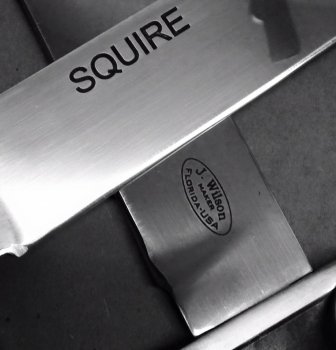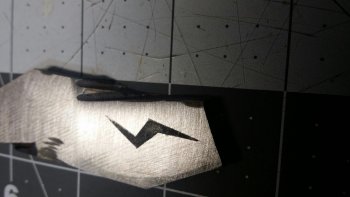Jason, I don't think the carbon pad will be that big an improvement, after this is totally isolated from the stencil by the felt pad. The brass (or carbon) only purpose is to conduct electrical voltage from negative wire to the solution. I suspect folks who find a BIG improvement over a brass pad is the learning curve has been taken care of. Just like a homebuilt etcher vs commercial unit - as long as the homebuilt is providing same voltage/current (very little current is required) the stencil doesn't know the difference between homebuilt and commercial. Since carbon is a semi-conductor compared to brass, this should help if voltage is a bit high for the stencil.
Wallace, I'm with you on the red lead for negative - just ain't right! I did it correctly by using red for positive and black for negative. Had I tried to use red for negative, it would have kept me totally confused with all the other DC leads laying around where red was positive. I'd LOVE to hear someone who has a commercial unit chime in if his red lead is neg or positive.
Ken H>
Wallace, I'm with you on the red lead for negative - just ain't right! I did it correctly by using red for positive and black for negative. Had I tried to use red for negative, it would have kept me totally confused with all the other DC leads laying around where red was positive. I'd LOVE to hear someone who has a commercial unit chime in if his red lead is neg or positive.
Ken H>




